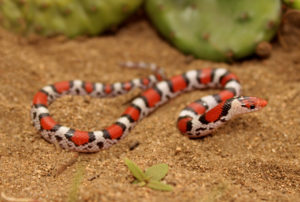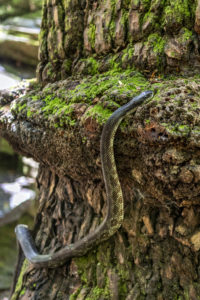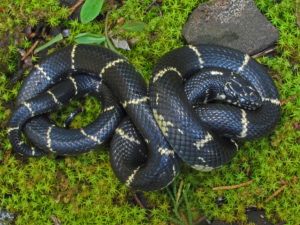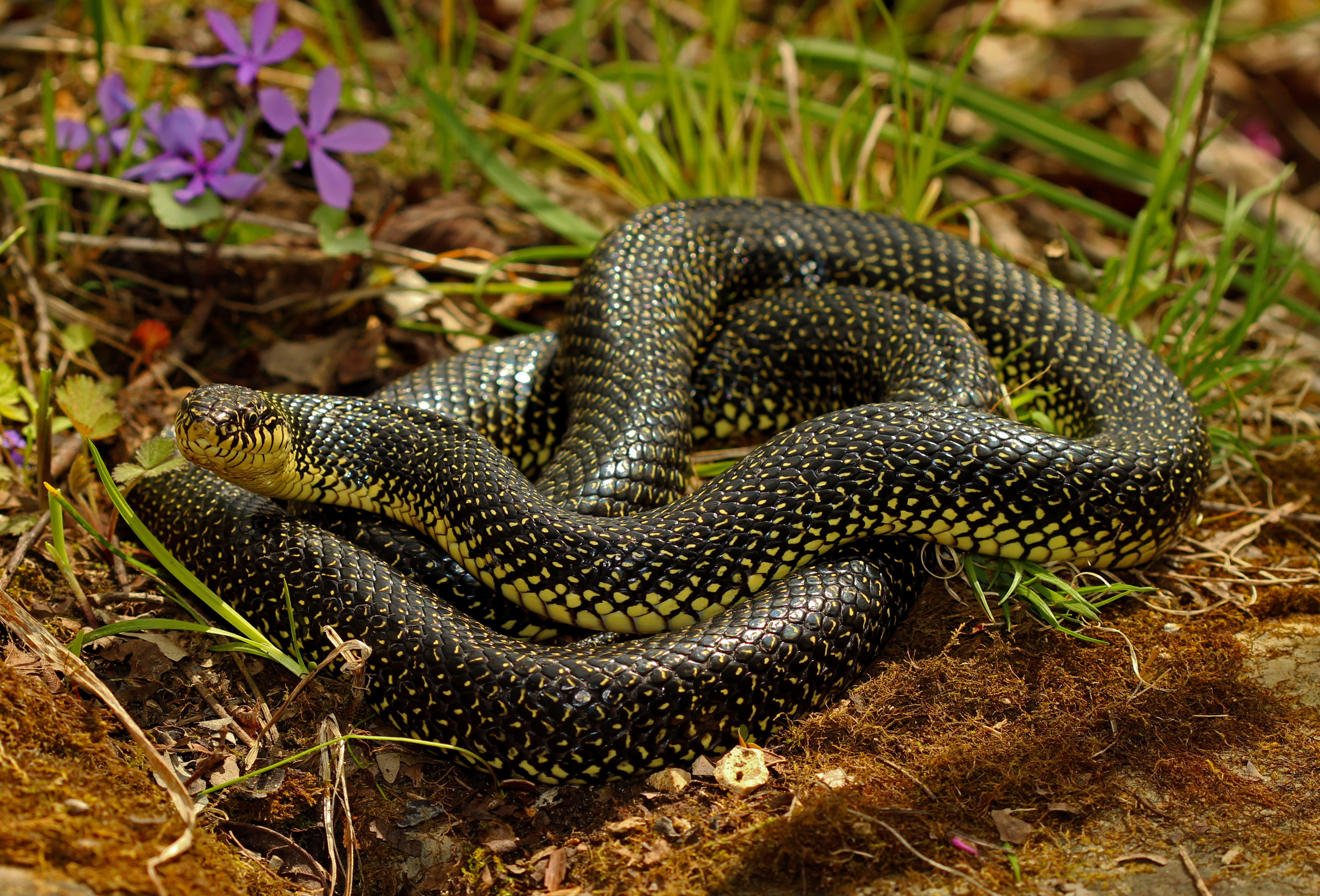Like so many of our world’s wildlife species, snakes are in decline due to habitat deterioration, disease, and the climate crisis. However, snakes face another unique threat: the negative perceptions surrounding their species. Snakes are not only vital for a healthy and thriving ecosystem, but also they have some interesting traits that you may find quite surprising!
SNAKES IN TENNESSEE
In Tennessee, there are 32 different species of snakes. Out of the 32 species, only four of them are venomous. The Copperhead and Timber Rattlesnake are located throughout Tennessee, while the Cottonmouth and Pygmy Rattlesnake are only found in the western part of the state.
Northern Scarletsnake
With most of Tennessee’s snakes being non-venomous, you may wonder why so many of them have teeth. Snakes, like the brightly colored and highly secretive Northern Scarletsnake,  will use their teeth to pierce large eggs that cannot be swallowed whole. Found throughout most of Tennessee, not much is known about the native Scarletsnakes due to their mysterious nature. Their striking color pattern of wide red bands, bordered in black and separated by cream or light yellow from head to tail, is quite the sight in their favorite habitat of pine-hardwood stands. The sandy soils of mixed-pine hardwood stands in Southeastern Tennesee are the best place to spot these beautiful snakes.
will use their teeth to pierce large eggs that cannot be swallowed whole. Found throughout most of Tennessee, not much is known about the native Scarletsnakes due to their mysterious nature. Their striking color pattern of wide red bands, bordered in black and separated by cream or light yellow from head to tail, is quite the sight in their favorite habitat of pine-hardwood stands. The sandy soils of mixed-pine hardwood stands in Southeastern Tennesee are the best place to spot these beautiful snakes.
Gray Ratsnake
Including reptile and bird eggs, snakes eat a massive variety of foods, with their most significant work in keeping our ecosystems in check is their consumption of rodents. Mice, rats, moles, voles, and squirrels are the favorite dining options for many of Tennessee’s native snakes, especially for one of our most abundantly seen snakes: the Gray Ratsnake. Found all across the state, these large reptiles are excellent climbers and can grow up to 72 inches in length! They, or their skins, are sometimes found in human dwellings, including attics and basements.  They, or their skins, are sometimes found in human dwellings, including attics and basements.
They, or their skins, are sometimes found in human dwellings, including attics and basements.
Since snakes are food-driven, finding one in your attic usually means you have mice friends, too. The good news is that snakes won’t stick around without a food source, but unlike most snakes in Tennessee, the Gray Ratsnake does not seem spooked by people. However, unless provoked, Ratsnakes will not try biting and are harmless if left alone.
In Tennessee, the indiscriminate killing of snakes is illegal. Remember, they serve a very important purpose!
Kingsnake
A unique food item that only ONE of our native species eats is other snakes, both venomous and non-venomous. Aptly named Kingsnakes, Tennessee has three sub-species, the Eastern Kingsnake (pictured), the Eastern Black Kingsnake, and the Speckled Kingsnake. Found commonly throughout the state, their favorite habitats include edges of wetlands, fields, forests, shrubby areas, and urban areas. Even though these seem like widely found habitats, some populations of Kingsnakes appear to be declining due to the pet trade, habitat loss, and road fatalities.
edges of wetlands, fields, forests, shrubby areas, and urban areas. Even though these seem like widely found habitats, some populations of Kingsnakes appear to be declining due to the pet trade, habitat loss, and road fatalities.
Unfortunately, many of our native snakes are in decline for these same reasons—despite being hardy creatures relatively resilient to human activities. As previously mentioned, snakes have the unique disadvantage of not being very well-liked, even though they’re an essential part of our food chain.
CELEBRATE SNAKES ANNUALLY
Through the efforts of Advocates for Snake Preservation (ASP), every year, on July 16th, we have an opportunity to celebrate snakes worldwide for World Snake Day. World Snake Day is meant to raise awareness about the conservation of these misunderstood creatures and their importance for a healthy and thriving ecosystem. Snakes deserve the same recognition our world’s other animals receive, and raising awareness for their conservation is something we can all do together.
Interested in learning about another important species in Tennessee? Click here to read about different Tennessee turtles!

